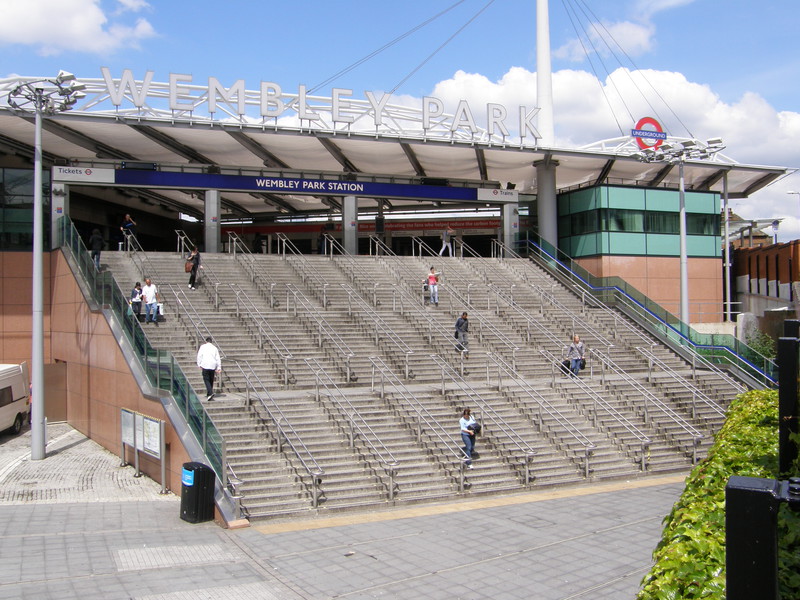
The weather gods must be smiling on me, because today opened with pure blue skies all the way to the horizon. Their timing is good, because although yesterday's walk took me from the urban landscape of zone 2 into the noticeably greener zone 4, today is when I finally broke out into proper countryside. The Welsh Harp Open Space might be a pleasant interlude, but it's still defiantly urban; the view across the reservoir to Neasden is quite built up and the nearby Edgware Road takes no prisoners, but today the countryside seems to stretch on and on and the sky is considerably bigger. I'm not into the woods yet – that will take at least another two zones – but I can sense that the balance of power is shifting, and when the sun is out, it's easy to be thankful.
Wembley Park to Preston Road
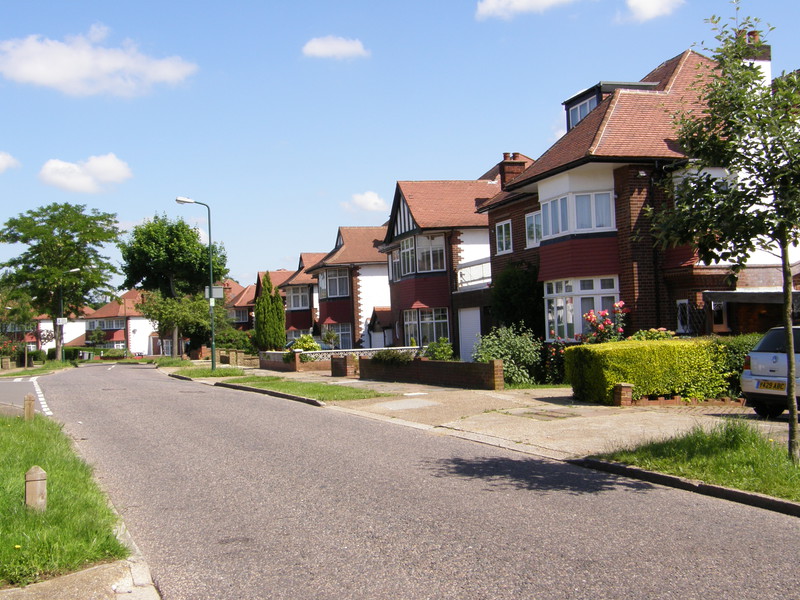
I'm going to be a bit tired of Wembley Stadium by the end of the week. I spent yesterday steering towards the giant hoop and today's walk starts with a view down long, straight Olympic Way as it leads all the way to the stadium, and tomorrow I'm going to be back here on a day off from tubewalking to see the Foo Fighters raise the roof. But it's such an impressive and imposing building that it's still fascinating even after days of gazing, the hoop giving it an otherworldly atmosphere, like an urban Jodrell Bank. It might have been late arriving, but it's a fitting home for the nation's favourite sport, and Wembley Park station is equally impressive. Obviously designed to enable huge crowds of screaming fans to get in and out as quickly as possible, a cascade of steps falls down from the entrance to a subway under the main road, taking the coloured scarves and party atmosphere off to the stadium below. I bet it's quite a sight on match day.
No such grandeur for me, though, as I snuck out of the side entrance into Bridge Road, turning north away from the stadium and into the suburbs of Barn Hill. This is prime Metro-land, the suburbia that sprung up in the Metropolitan line's wake back in the first few decades of the 20th century, and Barn Hill is a particularly pleasant example; indeed, it's sometimes hard to imagine a time before suburbia, but it's places like this that surely coined the phrase 'I remember when this was all fields.' Arthur Mee, the British writer who was most famous for The Children's Encyclopaedia, wrote in The King's England that Wembley was the 'epitome' of Metro-land, and it's easy to see why; the likes of Barn Hill are classic city suburbia, complete with twitching net curtains and still waters that you just know run deep.
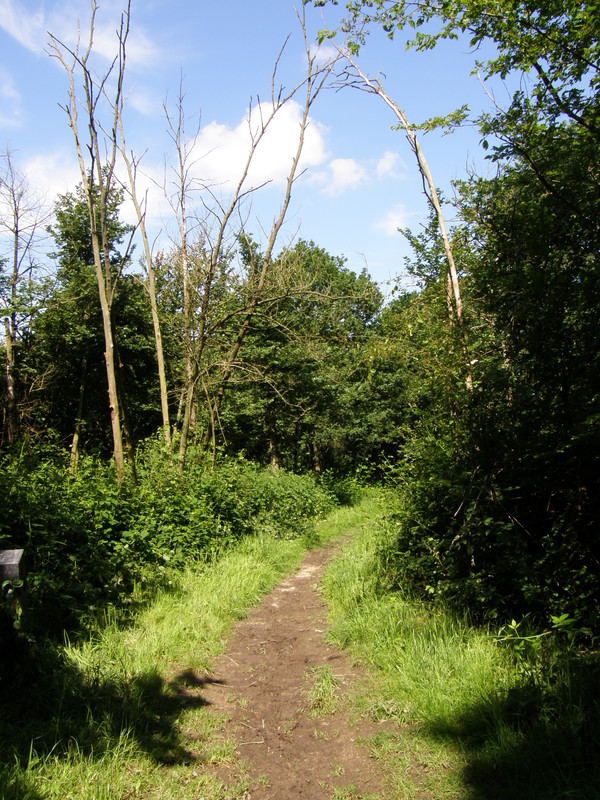
It's a pleasant stroll up the hill with Wembley at your back, and suddenly it is all fields, as the 'burbs give way to the greenery of Fryent Country Park. I've walked through these parts before, and I enjoyed it; that was a couple of years ago on the Capital Ring, and I thought I'd take it again today, as day 9 and day 10 of the Ring link Harrow and Fryent Country Park in a most pleasant way, albeit in the opposite direction to today's tubewalk. Last time I was here I enjoyed the views from the top of Barn Hill onto Wembley Stadium, excited that I was approaching the hallowed turf for the first time; today I used it to wave au revoir to the golden arch, at least until tomorrow.
Barn Hill is mainly clad in dappled woodland, so apart from the view from the summit over Wembley there's not a lot to see, though there is a pleasant pond on the summit, created by the landscape designer Humphry Repton, where the locals bring their dogs for a paddle on hot days like this. Sliding down the slippery path into the country park brings you out into open space, and there, to the left, I got my first view of Harrow, the spire of St Mary's Church perched on top of the hill like the spike on a kaiser's helmet. Indeed, I was probably still gawping at it when I reached a nasty spot of marshland by the Jubilee line, a bit of shock under pure blue skies, but Tuesday's rain is proving difficult to drain, and this wouldn't be the last lawn-cum-pond experience of the day.
And finally I broke new ground, but only because I got lost round here when I did the Capital Ring on 2007 and ended up taking a suburban detour that missed out the muddy forest in the corner of the country park. It might not mean much, but I like to think it means my map-reading skills are improving with age...
Preston Road to Northwick Park
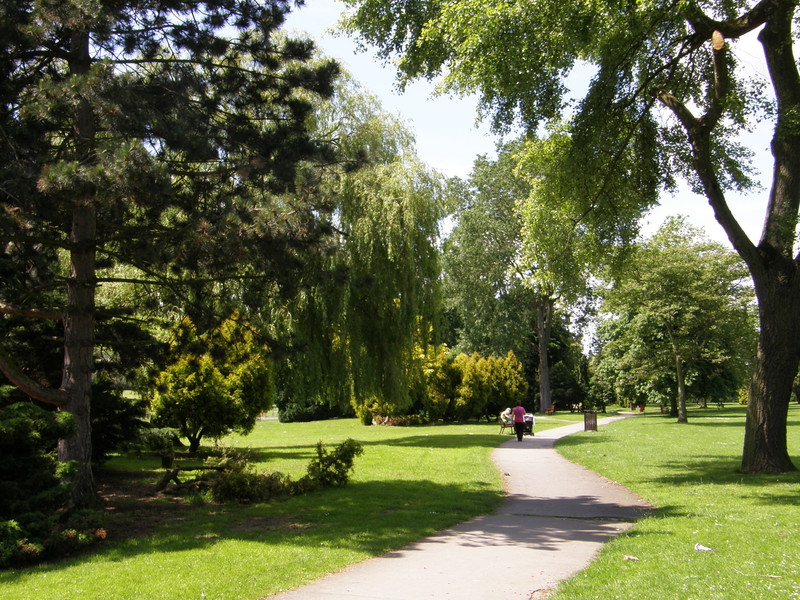
Preston Road station is just west of Stanmore Junction, where the Jubilee line turns north towards Stanmore, leaving the Metropolitan line to continue out into Buckinghamshire on its own. Preston Road itself is not the loveliest part of the world, but it's hard to find main roads in London that are. Luckily the suburbs of Preston follow the normal pattern of increasing in beauty as the main road recedes, and it isn't far to Preston Park, a genuinely lovely little suburban park (or it is when the sky is Saharan like it was today).
The next point of interest is South Kenton station, but don't be fooled, as it's actually on the Bakerloo line and not the Metropolitan (so I'll visit it properly when walking from Willesden Junction to Harrow & Wealdstone). The two lines do battle a little further north at the corner of Northwick Park, which opens up the sky a few minutes from the station. To the west, the spike of Harrow-on-the-Hill is a little closer that it was from Fryent, but to me, Northwick Park isn't the home of great views and huge playing fields, it's home to a bench that suddenly wrenched me back to . It's strange how memories latch themselves on to the most insignificant things, but as I walked into Northwick Park today, I glanced at a bench, and there I was, just over a year ago, taking a break and tucking into my lunch, not quite halfway through a double day of Capital Ring walking. I waved at myself as I walked past, but I didn't seem to notice.
I did notice two elderly walkers coming the other way, clutching the guidebook for the Capital Ring. That's the second couple I've spotted doing the walk (the others were near Old St Andrew's Church yesterday) and I'm surprised at the high numbers. When I did the Ring over the space of a year from summer 2006 to summer 2007, I didn't meet one other person doing the walk, but I suppose that makes sense, as for the last two days I've been swimming against the tide and doing the Ring backwards. It's good to see others enjoying it; I loved it, and was sad enough when it ended to come up with this walk instead. That'll teach me.
Northwick Park to Harrow-on-the-Hill
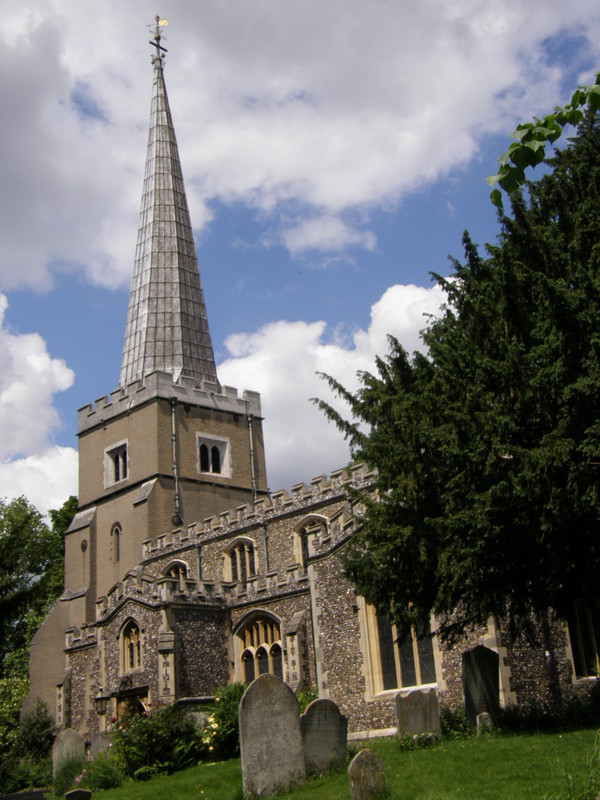
I ducked off the Ring for a short while to visit Northwick Park station, right next to the Harrow campus of the University of Westminster, and from there I struck west along a shaded path, sandwiched between the university and St Mark's and Northwick Hospitals. It's quite a busy place, this path, because it's clearly the designated smoking area for the hospital. There are black bin bags pinned up every few yards, presumably for the butts that still manage to litter the path, and when I wandered through it was proving a popular spot; then again, on a day like this, who wouldn't fancy a fag break out in the sun, even if you have to spend it skulking in the dingy undergrowth?
I picked up the Ring again on the other side of the roaring A404, while wandering alongside the playing fields of Harrow School. This really is a lovely part of the world, and as Football Lane rises to the summit of Harrow's eponymous hill, it passes all sorts of school buildings, from the Music School to the Museum of Harrow Life, before turning left in front of the Speech Room, and wandering past the Vaughan Library and the flint-coated school chapel. On a good day, which this was, you can see the city in the distance, framed between the library and chapel, with Canary Wharf, the Gherkin and Tower 42 shimmering in the far distance. It looks a world away, and it's particularly emotive when you've just walked from there; it's one of the perks of tubewalking, being able to glimpse where you've been, and where you're going.
This is where the Capital Ring disappears off in the direction of Sudbury Hill (which I'll be walking through on the Piccadilly line), but I turned up the hill to visit St Mary's Church, the spire that dominates Harrow from a distance. It's a gorgeous church, surrounded by lush greenery that surely provides a handy smoking spot for rule-breaking public schoolboys, and the views west out to Ruislip from the side of the hill are impressive; I'll be out that way on my Central line walk, luck permitting. For views that are slightly closer to home, the nearby Grove Open Space is a pretty patch of greenery, surrounded by some lovely houses that are just a stone's throw from the Tube station (and presumably a lot further from most people's pockets).
Harrow-on-the-Hill to North Harrow
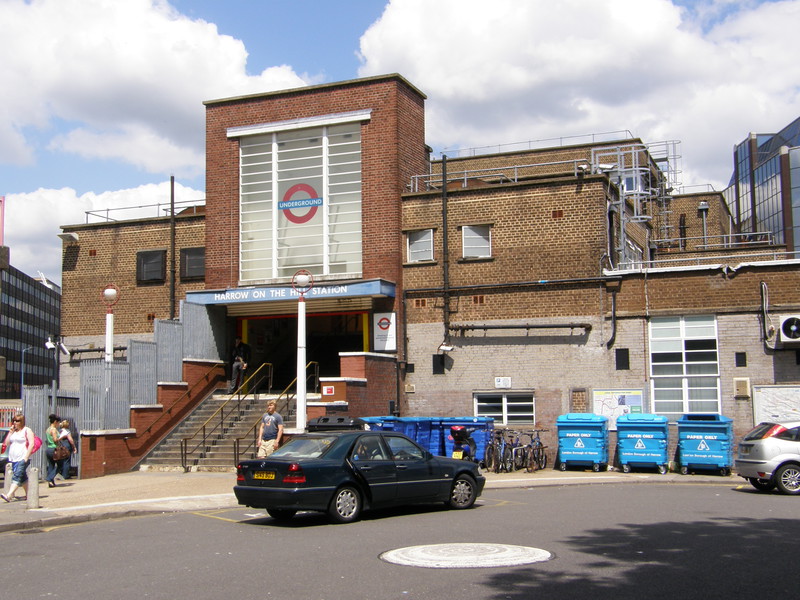
The design of Harrow-on-the-Hill station hints at the architectural excellence of Charles Holden's seminal Tube stations (such as Sudbury Town, Arnos Grove, Southgate and Oakwood on the Piccadilly line extension), but it turns out to be a much more functional affair, having only the glass slats on the front to remind you of Holden's more impressive designs. The station acts as a pedestrian crossing over the line and dumps you into the main shopping area of Greenhill, where buses rumble past as if to rub your nose in the fact that Harrow-on-the-Hill station is a world away from its namesake. The architect Hugh Casson regarded Harrow as the 'capital city' of Metro-land; I'm not sure the appeal is quite as obvious these days, though perhaps that says more about the old Metropolitan Railway's publicity department than anything else.
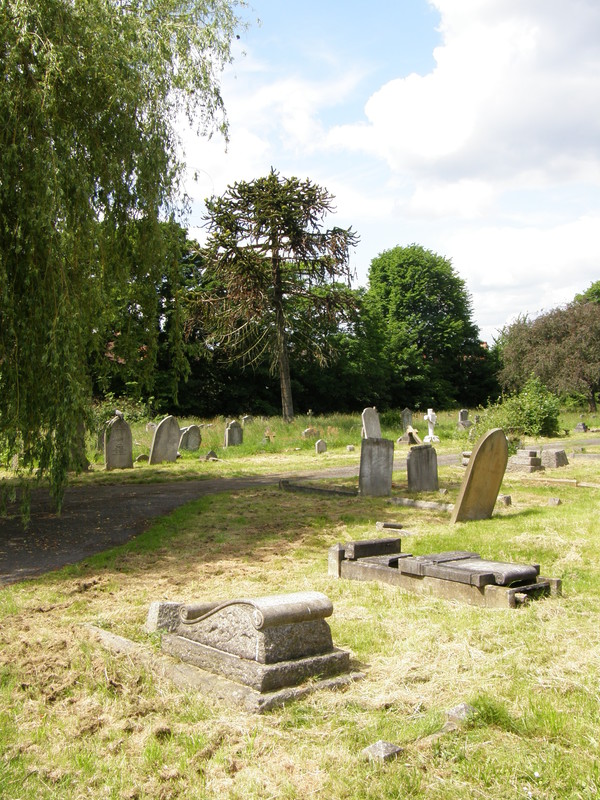
Happily escape is easy, and a quick jog up College Road and through the underpass beneath the busy A404/A312/A4005 junction (an experience that's as pleasant as it sounds) takes you to Harrow Recreation Ground, where you're greeted by a cricket pitch, a pavilion and a huge sigh of relief. It's amazing how the many green spaces of Greater London shield themselves from the droning outside, but Harrow Recreation Ground does just that, with wide open spaces, tennis courts, football areas and, bizarrely enough, a 'Sensory Garden for All'. There's even a gate that takes you through to Harrow Cemetery, though this is no Hampstead; it's more like an overgrown field with mouldering graves scattered randomly throughout, though on a sunny summer's day it has a definite faded charm about it.
The final stretch through the backstreets of North Harrow is pure suburbia, all the way to North Harrow station, whose entrance hides beneath a wide railway bridge, as if it doesn't want to be found. Perhaps it doesn't, because by this point the Metropolitan line has become quite sleepy; fast Metropolitan line trains don't stop here, shooting past on the other side of the station on their non-stop journey between Rickmansworth and Harrow-on-the-Hill. I think I'm going to enjoy walking through outer Metro-land; it's all starting to slow down and take its time, and I think I'll do the same as I make my way into the outer reaches of zones 7, 8 and 9, where only the Metropolitan line dares to go...